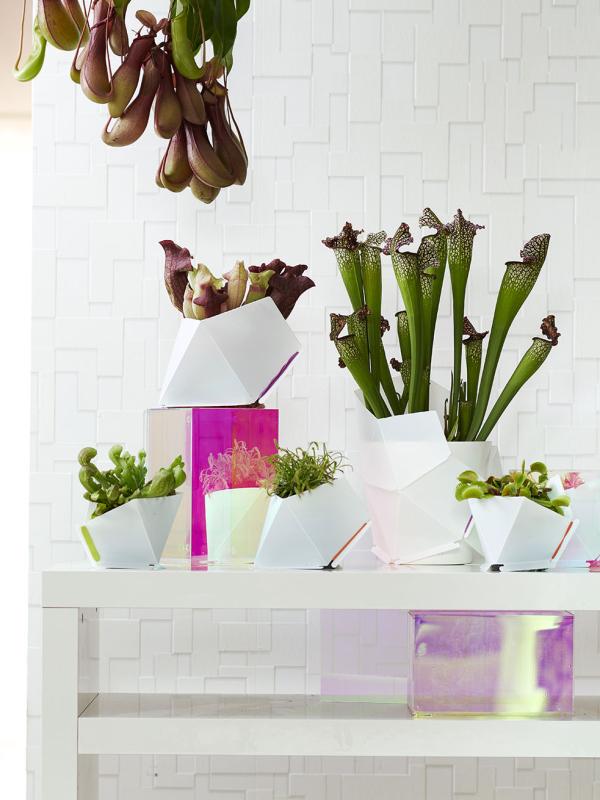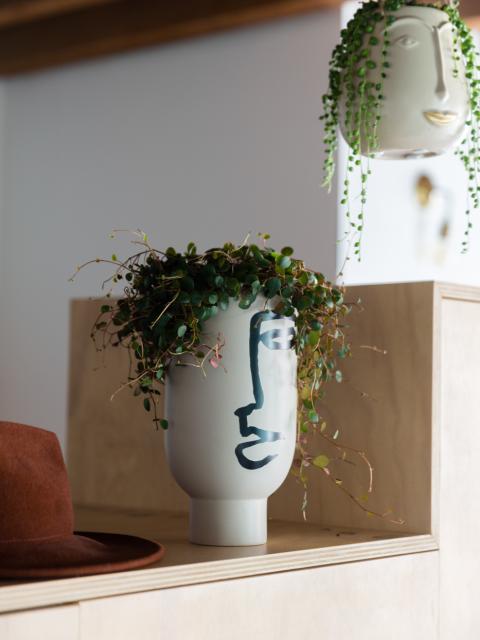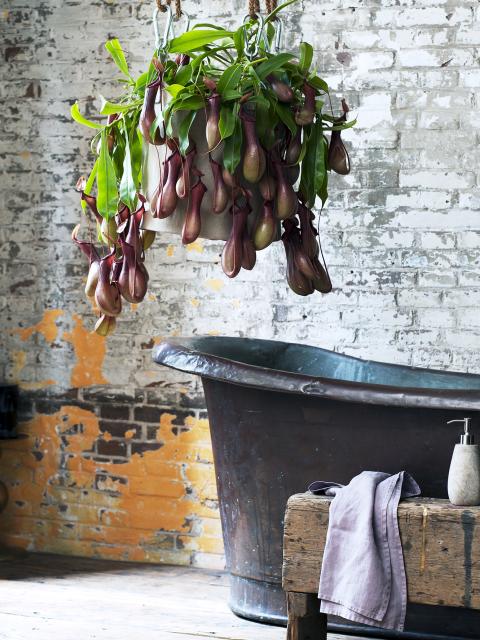The pitcher plant (scientific name: Nepenthes) is known as the crown jewel amongst carnivorous plants. The tops of the leaves form a tendril that gradually swells into a voluptuous pitcher with a small neck and an upright lid. It creates quite a Jurassic Park feeling.

Colours and shapes
The pitcher plant produces a reddish brown pitcher with a lid on the ends of the green leaves. It uses nectar to attract insects and other prey to the pitcher, which is very smooth the top. That means that the prey can easily slip and fall into the pitcher, where a sticky liquid full of digestive enzymes makes short shrift of them. This provides the plant with its nutrients. The pitcher plant is available in various sizes as a hanging plant and upright plant; the latter looks best in a tall pot.
Symbolism
The carnivorous plant was given the scientific name Nepenthes in 1737 by botanist Carl Linnaeus. He based it on a section from Homer’s Odyssey in which an Egyptian queen gives the drug Nepenthes pharmakon to sorrowful Helena. The name means ‘no sorrow’. Linnaeus explained his choice of name as follows: “If this is not Helena’s Nepenthes, it certainly is for all botanists. What botanist would not be filled with amazement if he were to find this incredible plant after a long journey? When he sees this admirable work of Mother Nature, his delight will cause him to forget all the ills he has suffered!”
Origin
The pitcher plant is a member of the family of the same name, and grows in the warm damp jungles of South-east Asia, particularly on Borneo. There are some 160 known species. In the wild they can climb to a height of 15 metres and play an important role in the environment. Hence orangutans are known to drink the liquid from the pitchers, and the plant maintains diplomatic relations with certain larvae, ants and spiders that it does not kill.







